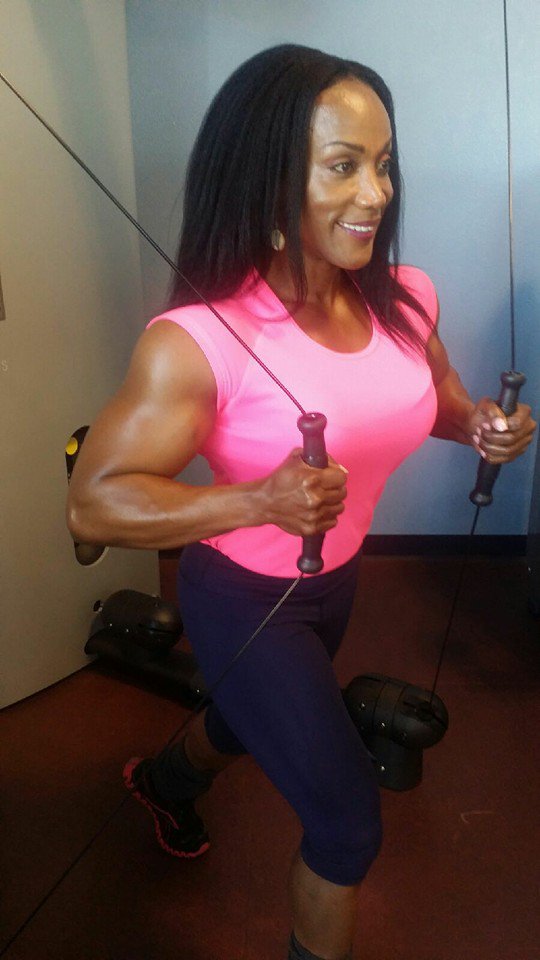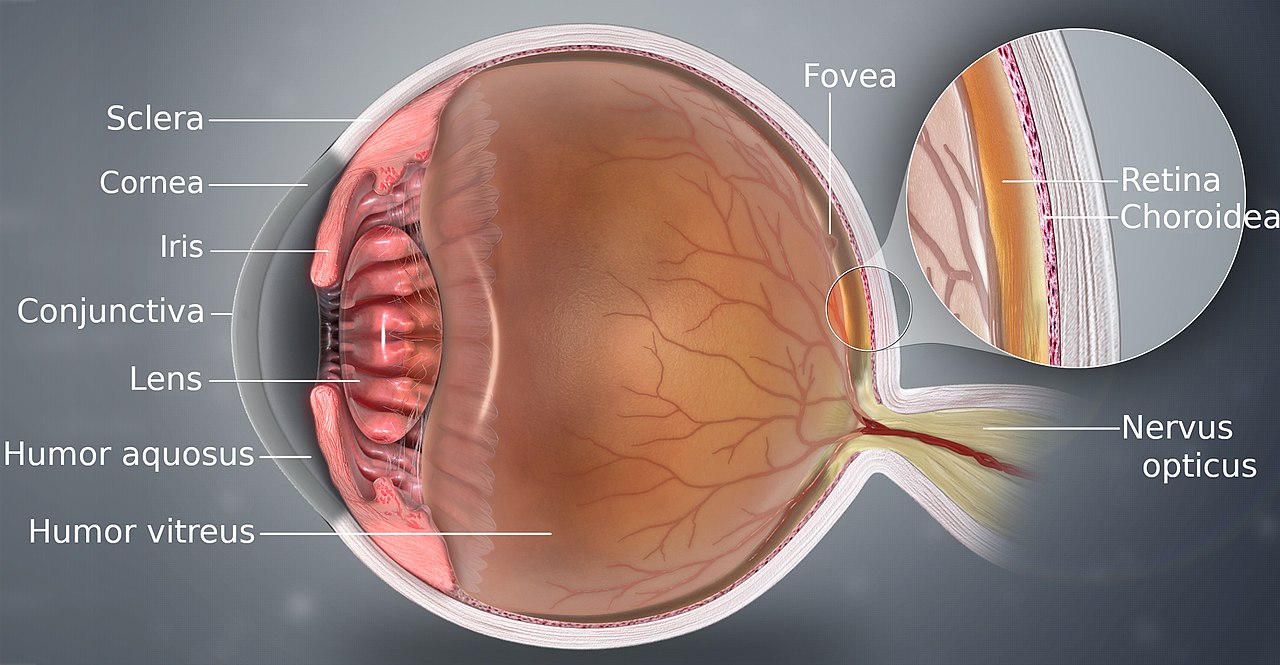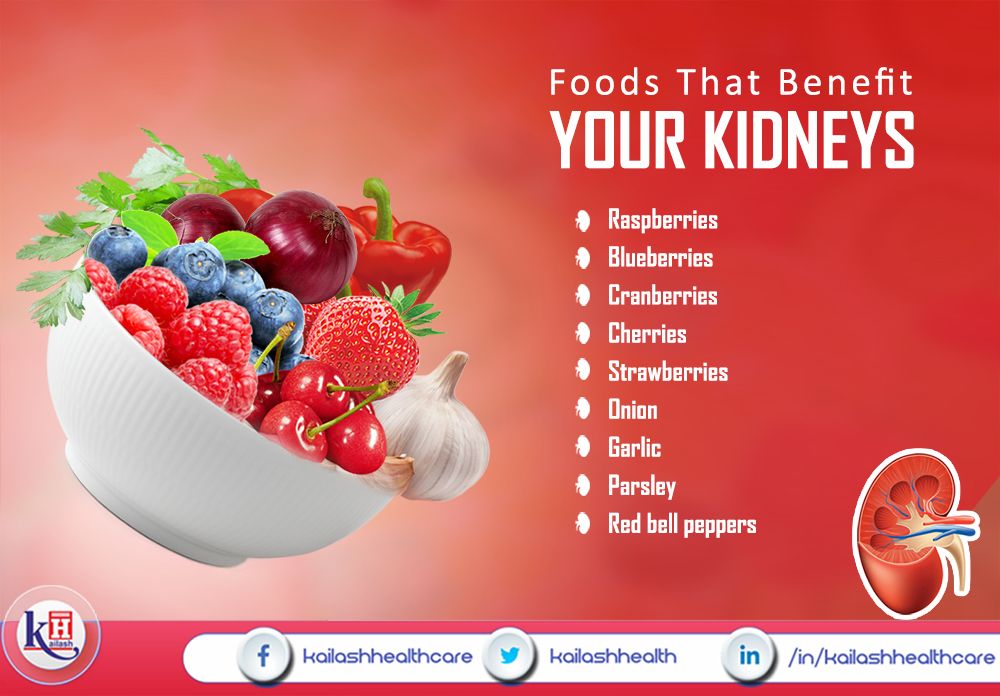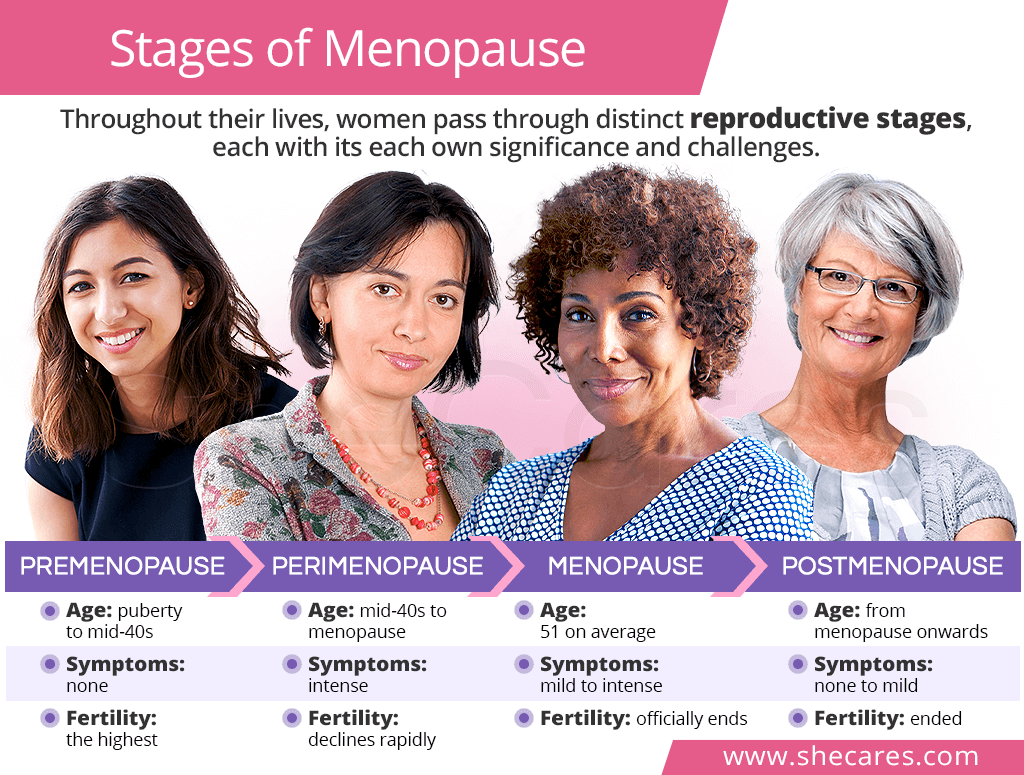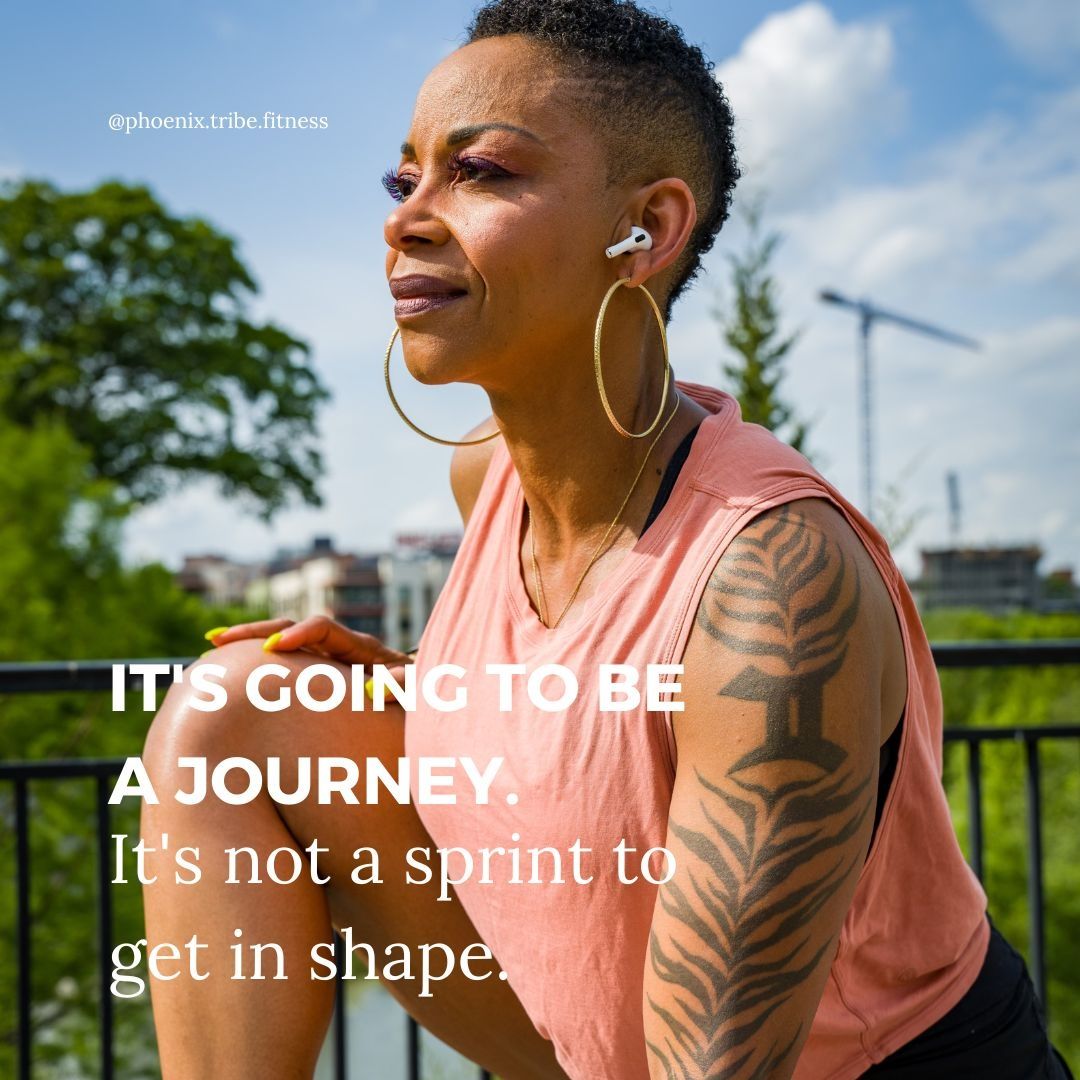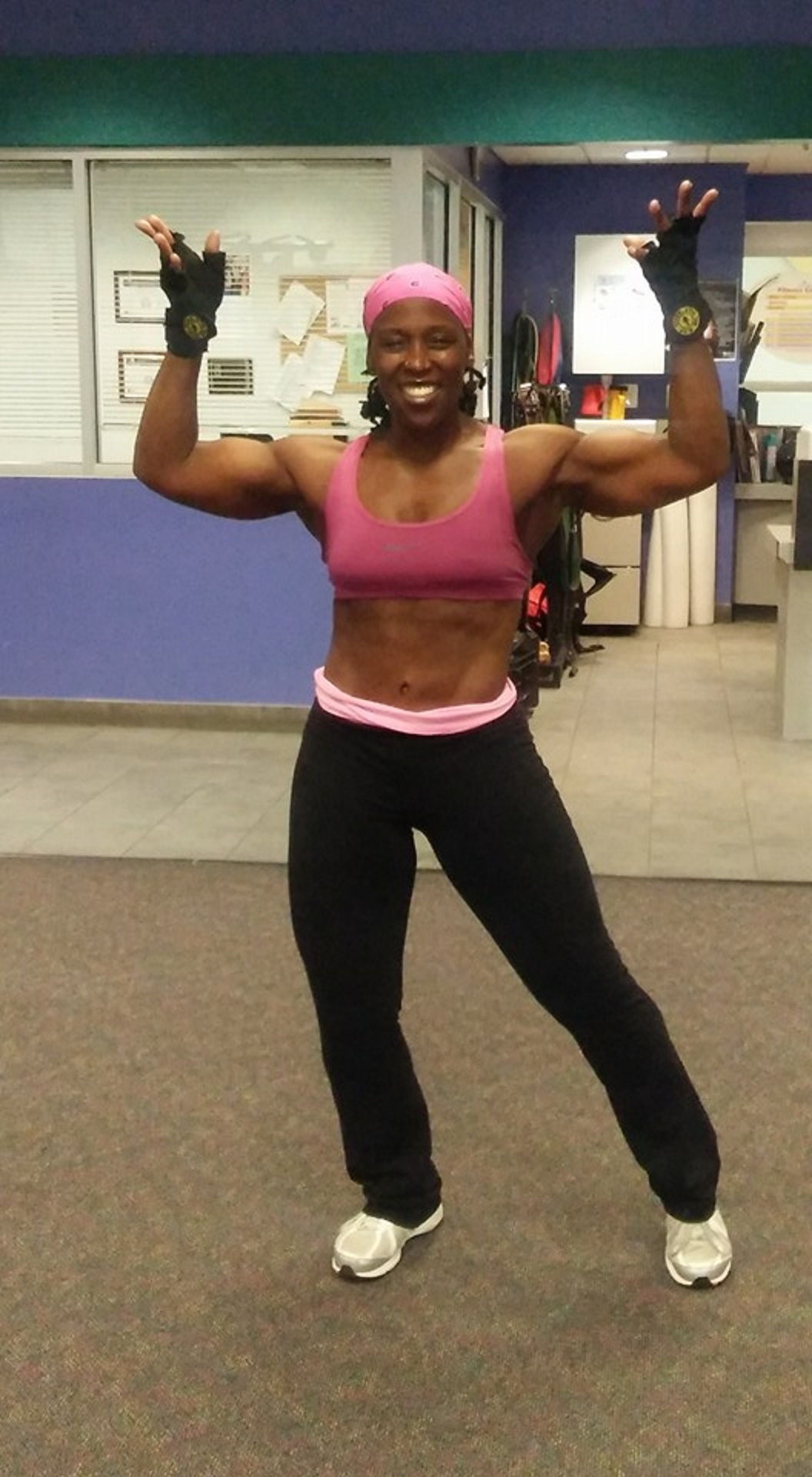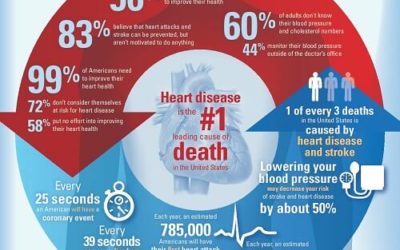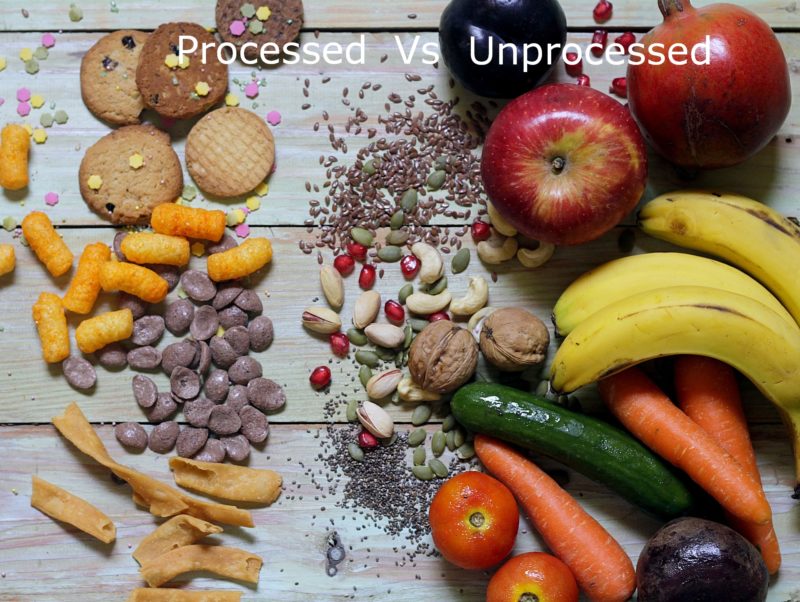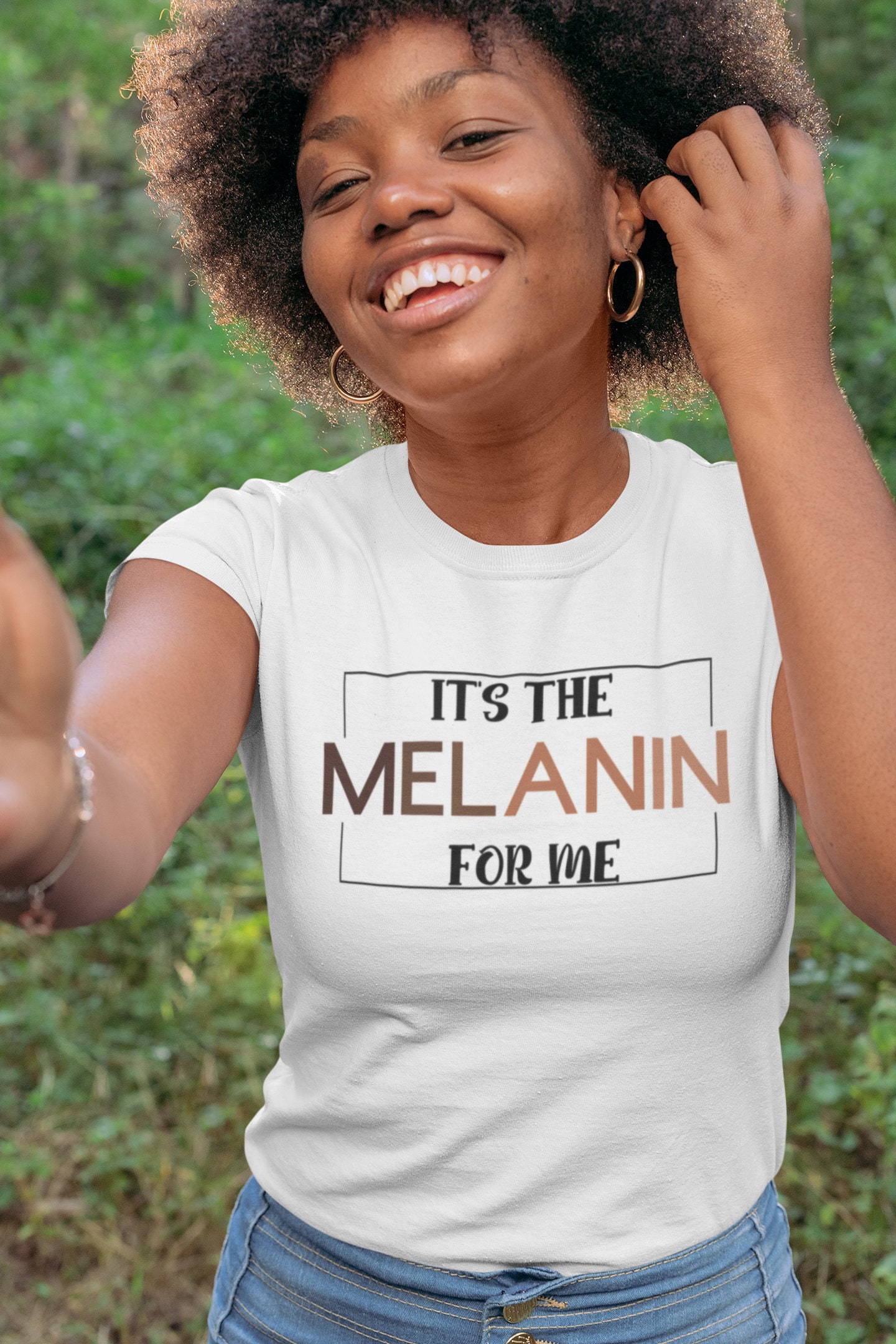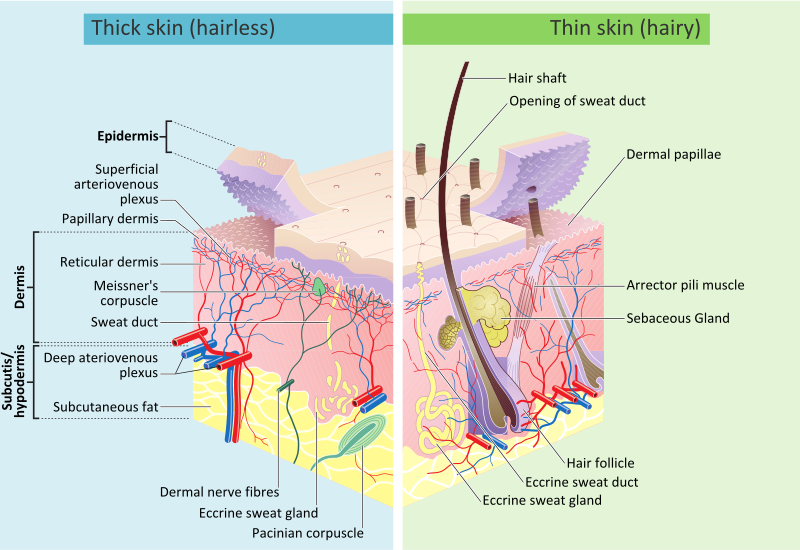Health
We live in a new generation. As we approach 2030, health remains a very important part of human existence. There are tons of studies showing the benefits of exercising, reading literature, eating healthy, and socializing with fellow human beings (as we are social creatures as humans). Finding ways to co-exist among omnivores, vegans, vegetarians, and other people with diverse eating habits is important too. We can agree to disagree on eating habits without demonizing vegans or non-vegans. The problem is that we don't live in a meritocracy in society. There are food deserts, massive poverty, malnutrition, and other important complications internationally. We can't solve these problems with laissez faire capitalism, naivete, or putting our heads in the sand. We can't solve these problems with bourgeoisie rhetoric (that is about poor shaming, dehumanization, and massive arrogance), materialism, and egoism. These issues must be solved or rectified by real solutions by changing laws and policies to fight poverty, investing in eliminating food deserts, encouraging compassion plus empathy in our society, advancing body positivity, and investing in the tons of health experts saving lives literally. In our time, there are so many unsung men and unsung women teaching people about health facts, giving motivation to allow people to fulfill their fitness aspirations, and breaking down the barriers in order for human beings to be their best selves. This is all about being our best in this life. These unsung fitness heroes advance aerobic exercise (which can decrease the risk of heart disease), strength training, improving mental health, HIIT workouts, and eating healthy foods that will increase human life expectancy, improve bone strength, make people look years of decades younger (than their actual age), improve cognitive thinking, and develop emotional health. True health care culture is about treating people with respect without respect to persons. That means that we don't believe in dehumanizing people of diverse physical appearances, colors, or backgrounds. Everyone is created equal, and they are born with the unalienable rights to life, liberty, and the pursuit of happiness. Life is a unique journey. Subsequently, learning about health is also an interesting voyage that focuses on thriving to live the best life that you earnestly deserve.
The Human Eye
The human eye is one of the most important sensory organs of the human body. It is part of the sensory nervous system. It relates to visible light and allows human beings to use visual information for many purposes like seeing things, keeping balance, and maintaining circadian rhythm. Part of life is developing, growing, analyzing, and innovating information in the cosmos of the Universe. The human eye has a great deal to do with developing and forming information about the world indeed. The human eye visually shows the white sclera with some blood vessels, an iris, and a black pupil. There are dozens of parts of the human eye. Some parts of the eye are the pupil, lens nucleus, ciliary process, Schlemm's canal, ora serrata, fovea, retina, choroid, arteries, veins, etc. In essence, the human eye is a living optical device. It is approximately spherical in shape with outer layers like the outermost white part of the eye (the sclera) and one of its inner layers have a pigmented choroid keeping the eye light tight except on the eye's optic axis. In order, along the optic axis, the optical components consist of a first lens (the cornea—the clear part of the eye) that accomplishes most of the focusing of light from the outside world; then an aperture (the pupil) in a diaphragm (the iris—the colored part of the eye) that controls the amount of light entering the interior of the eye; then another lens (the crystalline lens) that accomplishes the remaining focusing of light into images; then a light-sensitive part of the eye (the retina) where the images fall and are processed. The retina makes a connection to the brain via the optic nerve. The remaining components of the eye keep it in its required shape, nourish and maintain it, and protect it.
Three types of cells in the retina convert light energy into electrical energy used by the nervous system: rods respond to low-intensity light and contribute to the perception of low-resolution, black-and-white images; cones respond to high intensity light and contribute to perception of high-resolution, colored images; and the recently discovered photosensitive ganglion cells respond to a full range of light intensities and contribute to adjusting the amount of light reaching the retina, to regulating and suppressing the hormone melatonin, and to entraining circadian rhythm. Humans have two eyes on the left and right side of the face. The eyes sit in bony cavities called orbits in the skulls. Six extraocular muscles that control eye movements. The front visible part of the eye is made up of the whitish sclera, a colored iris, and the pupil. A thin layer called the conjunctiva sits on top of this. The front part is also called the anterior segment of the eye.
The eye is not shaped like a perfect sphere, rather it is a fused two-piece unit, composed of an anterior (front) segment and the posterior (back) segment. The anterior segment is made up of the cornea, iris, and lens. The cornea is transparent and more curved and is linked to the larger posterior segment, composed of the vitreous, retina, choroid and the outer white shell called the sclera. The cornea is typically about 11.5 mm (0.45 in) in diameter, and 0.5 mm (500 μm) in thickness near its center. The posterior chamber constitutes the remaining five-sixths; its diameter is typically about 24 mm (0.94 in). An area termed the limbus connects the cornea and sclera. The iris is the pigmented circular structure concentrically surrounding the center of the eye, the pupil, which appears to be black. The size of the pupil, which controls the amount of light entering the eye, is adjusted by the iris's dilator and sphincter muscles.
Light energy enters the eye through the cornea, through the pupil and then through the lens. The lens shape is changed for near focus (accommodation) and is controlled by the ciliary muscle. Photons of light falling on the light-sensitive cells of the retina (photoreceptor cones and rods) are converted into electrical signals that are transmitted to the brain by the optic nerve and interpreted as sight and vision. The size of the eye differs among adults by only one or 2 millimetres. The eyeball is generally less tall than it is wide. The sagittal vertical (height) of a human adult eye is approximately 23.7 mm (0.93 in), the transverse horizontal diameter (width) is 24.2 mm (0.95 in) and the axial anteroposterior size (depth) averages 22.0–24.8 mm (0.87–0.98 in) with no significant difference between sexes and age groups. Strong correlation has been found between the transverse diameter and the width of the orbit (r = 0.88). The typical adult eye has an anterior to posterior diameter of 24 mm (0.94 in), and a volume of 6 cubic centimetres (0.37 cu in).
The eyeball grows rapidly, increasing from about 16–17 mm (0.63–0.67 in) diameter at birth to 22.5–23 mm (0.89–0.91 in) by three years of age. By age 12, the eye attains its full size. Each eye has seven extraocular muscles located in its orbit. Six of these muscles control the eye movements, the seventh controls the movement of the upper eyelid. The six muscles are four recti muscles – the lateral rectus, the medial rectus, the inferior rectus, and the superior rectus, and two oblique muscles the inferior oblique, and the superior oblique. The seventh muscle is the levator palpebrae superioris muscle. When the muscles exert different tensions, a torque is exerted on the globe that causes it to turn, in almost pure rotation, with only about one millimeter of translation. Thus, the eye can be considered as undergoing rotations about a single point in the center of the eye.
The approximate field of view of an individual human eye (measured from the fixation point, i.e., the point at which one's gaze is directed) varies by facial anatomy, but is typically 30° superior (up, limited by the brow), 45° nasal (limited by the nose), 70° inferior (down), and 100° temporal (towards the temple). For both eyes combined (Binocular vision) visual field is approximately 100° vertical and a maximum 190° horizontal, approximately 120° of which makes up the binocular field of view (seen by both eyes) flanked by two uniocular fields (seen by only one eye) of approximately 40 degrees. It is an area of 4.17 steradians or 13700 square degrees for binocular vision. When viewed at large angles from the side, the iris and pupil may still be visible by the viewer, indicating the person has peripheral vision possible at that angle. About 15° temporal and 1.5° below the horizontal is the blind spot created by the optic nerve nasally, which is roughly 7.5° high and 5.5° wide.
The complexity of the human eye is dealt with by a general practitioner and eye care professionals. There are ophthalmologists (M.D.) and optometrists (O.D.) who work as professionals to diagnoses eye disease, prescribe lenses to correct vision, conduct eye exams, etc. However, typically only ophthalmologists are licensed to perform surgical procedures. Ophthalmologists may also specialize within a surgical area, such as cornea, cataracts, laser, retina, or oculoplastic. Eye irritation is common among people from dryness, itchiness, pain, redness, etc. Work stress, pollution, other factors can contribute to eye irritation. There are many diseases and disorders that relate to the eye. Changes to the eye will come from the aging process. The quality of vision worsens due to age among any human being. No human being can escape that.
Macular degeneration is especially prevalent in the U.S. and affects roughly 1.75 million Americans each year. Having lower levels of lutein and zeaxanthin within the macula may be associated with an increase in the risk of age-related macular degeneration. Lutein and zeaxanthin act as antioxidants that protect the retina and macula from oxidative damage from high-energy light waves. As the light waves enter the eye they excite electrons that can cause harm to the cells in the eye, but they can cause oxidative damage that may lead to macular degeneration or cataracts. Lutein and zeaxanthin bind to the electron free radical and are reduced rendering the electron safe. There are many ways to ensure a diet rich in lutein and zeaxanthin, the best of which is to eat dark green vegetables including kale, spinach, broccoli, and turnip greens. Nutrition is an important aspect of the ability to achieve and maintain proper eye health. Lutein and zeaxanthin are two major carotenoids, found in the macula of the eye, that are being researched to identify their role in the pathogenesis of eye disorders such as age-related macular degeneration and cataracts. Among human beings, the use of eyes has been used in creating art, expressing human sexuality, outlining fashion, and other purposes.
Kidney Health
The human kidneys are one of the most important parts of the human body. The human kidneys are two reddish brown bean shaped blood filtering organs. It is part of a miltilobor, multipaillary form of mammalian kidneys, usually without signs of external lobulation. They are located on the left and right in the retroperitoneal space, and in adult humans are about 12 centimeters (4+1⁄2 inches) in length. They receive blood from the paired renal arteries, blood exits into the paired renal veins. Each kidney is attached to a ureter, a tube that carries excreted urine to the bladder. The kidney participates in the control of the volume of various body fluids, fluid osmolality, acid-base balance, various electrolyte concentrations, and removal of toxins. Filtration occurs in the glomerulus: one-fifth of the blood volume that enters the kidneys is filtered. Examples of substances reabsorbed are solute-free water, sodium, bicarbonate, glucose, and amino acids. Examples of substances secreted are hydrogen, ammonium, potassium and uric acid. The nephron is the structural and functional unit of the kidney. Each adult human kidney contains around 1 million nephrons, while a mouse kidney contains only about 12,500 nephrons. The kidneys also carry out functions independent of the nephrons. For example, they convert a precursor of vitamin D to its active form, calcitriol; and synthesize the hormones erythropoietin and renin.
Chronic kidney disease of CKD is one of the most leading public health problems worldwide. There is a global estimate that the estimated prevalence of CKD is 13.4%, and patients with kidney failure readily need renal replacement therapy (between an estimation of 5 and 7 million people). Procedures used in the management of kidney disease include chemical and microscopic examination of the urine (urinalysis), measurement of kidney function by calculating the estimated glomerular filtration rate (eGFR) using the serum creatinine; and kidney biopsy and CT scan to evaluate for abnormal anatomy. Dialysis and kidney transplantation are used to treat kidney failure; one (or both sequentially) of these are almost always used when renal function drops below 15%. Nephrectomy is frequently used to cure renal cell carcinoma. Chronic kidney disease relates to the gradual loss of kidney function over the period of months to years. Later symptoms can be leg swelling, feeling tired, vomiting, loss of appetite, and confusion. Some complications can be hormonal dysfunction of the kidney, high blood pressure, bone disease, and anemia. Additionally, CKD patients have markedly increased cardiovascular complications with increased risks of death and hospitalization. There are many causes of chronic kidney disease like: diabetes, high blood pressure, glomerulonephritis, and polycystic kidney disease. Risk factors include a family history of chronic kidney disease too. Diagnosis is by blood tests to measure the estimated glomerular filtration rate (eGFR), and a urine test to measure albumin. Ultrasound or kidney biopsy may be performed to determine the underlying cause. Several severity-based staging systems are in use.
Screening at-risk people is recommended. Initial treatments may include medications to lower blood pressure, blood sugar, and cholesterol. Angiotensin-converting enzyme inhibitors (ACEIs) or angiotensin II receptor antagonists (ARBs) are generally first-line agents for blood pressure control, as they slow progression of the kidney disease and the risk of heart disease. Loop diuretics may be used to control edema and, if needed, to further lower blood pressure. NSAIDs should be avoided. Other recommended measures include staying active, and certain dietary changes such as a low-salt diet and the right amount of protein. Treatments for anemia and bone disease may also be required. Severe disease requires hemodialysis, peritoneal dialysis, or a kidney transplant for survival. Chronic kidney disease affected 753 million people globally in 2016 (417 million females and 336 million males.) In 2015, it caused 1.2 million deaths, up from 409,000 in 1990. The causes that contribute to the greatest number of deaths are high blood pressure at 550,000, followed by diabetes at 418,000, and glomerulonephritis at 238,000. CKD doesn't have symptoms at first. Yet, uremic frost on the head is a sign of someone with chronic kidney disease. Those with CKD have to reduce potassium intake. Sexual dysfunction is very common in both men and women with CKD. A majority of men have a reduced sex drive, and difficulty obtaining an erection, and reaching orgasm, and the problems get worse with age. Most women have trouble with sexual arousal, painful menstruation, and problems with performing and enjoying sex are common. Cognitive decline in patients experiencing CKD is an emerging symptom revealed in the research literature. Current research suggests that patients with CKD face a 35-40% higher likelihood of cognitive decline and or dementia. This relation is dependent on the severity of CKD in each patient; although emerging literature indicates that patients at all stages of CKD will have a higher risk of developing these cognitive issues. To manage kidney disease, people can have a low protein and low salt diet, treatment of high blood lipids, express weight management, exercise, and get adequate sleep.
Screening those who have neither symptoms nor risk factors for CKD is not recommended. Those who should be screened include: those with hypertension or history of cardiovascular disease, those with diabetes or marked obesity, those aged at 60 years, subjects with African American ancestry, those with a history of kidney disease in the past, and subjects who have relatives who had kidney disease requiring dialysis. Currently, several compounds are in development for the treatment of CKD. These include the angiotensin receptor blocker (ARB) olmesartan medoxomil; and sulodexide, a mixture of low molecular weight heparin and dermatan sulfate.
Renal physiology is the study of kidney function. Nephrology is the medical specialty that addresses diseases of kidney function: these include CKD, nephritic and nephrotic syndromes, acute kidney injury, and pyelonephritis. Urology addresses diseases of kidney (and urinary tract) anatomy: these include cancer, renal cysts, kidney stones and ureteral stones, and urinary tract obstruction. The word “renal” is an adjective meaning “relating to the kidneys”, and its roots are French or late Latin. Whereas according to some opinions, "renal" should be replaced with "kidney" in scientific writings such as "kidney artery", other experts have advocated preserving the use of "renal" as appropriate including in "renal artery."
There are many ways to improve kidney health. People can eat healthy foods and reduce the intake of sodium, proteins, and phosphorus in the diet. An adequate level of potassium intake can be done. People can detoxify the kidneys by drinking sufficient water and stay hydrated constantly. Foods with vitamin C, apples, kidney beans, lemon juice, cranberries, and excess fluids to maintain hydration. Vitamin B supplements and Omega-3 also help to detoxify the kidney and liver. Drinking juice or soda with high calories should also be avoided. Avoiding alcohol intake and quitting smoking are important. Avoid taking too many painkiller medicines as they have bad effects on kidney function. People can get a checkup to get the kidney checked out. People should keep their blood pressure below 140/90 or ask a professional doctor what the best blood pressure target is is. Because having kidney disease increases the chances of also having heart disease and stroke, early detection and treatment of kidney disease is important for people with diabetes to help prevent or delay cardiovascular death and kidney failure.
Estrogen
Estrogen is one of the most important sex hormones in humanity. Tons of women know all about estrogen. Men and women should know about estrogen as a way to develop a greater understanding about how human beings function in general. Estrogen is a major sex hormone responsible for the development and regulation of the women's reproductive system and secondary sex characteristics. There are three major endogenous estrogens that have estrogenic hormonal activity: estrone (E1), estradiol (E2), and estriol (E3). Estradiol, an estrane, is the most potent and prevalent. Another estrogen called estetrol (E4) is produced only during pregnancy. Estrogens are synthesized in all vertebrates and some insects. Quantitatively, estrogens circulate at lower levels than androgens in both men and women. While estrogen levels are significantly lower in males than in females, estrogens nevertheless have important physiological roles in males. Like all steroid hormones, estrogens readily diffuse across the cell membrane. Once inside the cell, they bind to and activate estrogen receptors (ERs) which in turn modulate the expression of many genes. Additionally, estrogens bind to and activate rapid-signaling membrane estrogen receptors (mERs), such as GPER (GPR30).
In addition to their role as natural hormones, estrogens are used as medications, for instance in menopausal hormone therapy, hormonal birth control, and feminizing hormone therapy (for transgender people, intersex people, and nonbinary people). Synthetic and natural estrogens have been found in the environment and are referred to as xenoestrogens. Estrogens are among the wide range of endocrine-disrupting compounds (EDCs) and can cause health issues and reproductive situations in both wildlife and humans. The four major naturally occurring estrogens are estrone (E1), estradiol (E2), estriol (E3), and estetrol (E4). Estradiol (E2) is the predominant estrogen during reproductive years both in terms of absolute serum levels as well as in terms of estrogenic activity. During menopause, estrone is the predominant circulating estrogen, and during pregnancy estriol is the predominant circulating estrogen in terms of serum levels. Given by subcutaneous injection in mice, estradiol is about 10-fold more potent than estrone and about 100-fold more potent than estriol.
The actions of estrogen are mediated by the estrogen receptor (ER), a dimeric nuclear protein that binds to DNA and controls gene expression. Like other steroid hormones, estrogen enters passively into the cell where it binds to and activates the estrogen receptor. The estrogen: ER complex binds to specific DNA sequences called a hormone response element to activate the transcription of target genes (in a study using an estrogen-dependent breast cancer cell line as model, 89 such genes were identified). Since estrogen enters all cells, its actions are dependent on the presence of the ER in the cell. The ER is expressed in specific tissues including the ovary, uterus, and breast. The metabolic effects of estrogen in postmenopausal women have been linked to the genetic polymorphism of the ER. Women and men have estrogen, but higher levels of estrogen exist among women among reproductive age. Women have estrogen that promote the development of female secondary sexual characteristics, such as breasts, darkening and enlargement of nipples, and thickening of the endometrium and other aspects of regulating the menstrual cycle. For women, estrogen can darken the skin during pregnancy. Estrogen can improve the uterus lining, grow ovulation, and work to deal with pubertal development. In males, estrogen regulates certain functions of the reproductive system important to the maturation of sperm and may be necessary for a healthy libido. For men, androgens are responsible for pubic and body hair growth including acne and axillary odor. That is why human pheromones are a factor in mating selection and reproduction in human beings. Pheromones can be used to deliver information about the major histocompatibility complex (MHC). The MCH in humans is referred to as the Human Leukocyte Antigen (HLA). Each type has a unique scent profile that can be utilized during the mating selection process. When selecting mates, women tend to be attracted to those that have different HLA-types than their own.
When compared to that of strangers, babies are observed to have stronger neural connections with their mothers. This strengthened neurological connection allows for the biological development and socialization of the infant by their mother. Using these connections, the mother transmits olfactory signals to the infant which are then perceived and integrated. In terms of biological functioning, olfactory signaling allows for functional breastfeeding to occur. In cases of effective latching, breastfed infants are able to locate their mother's nipples for feeding using the sensory information enclosed in their mother's body odor.
There is menopause that every woman goes through. It is the time when menstrual periods permanently cease, marking the end of reproduction. It typically occurs between the ages of 45 and 55, although the exact timing can vary. Menopause is usually a natural change. It can occur earlier in those who smoke tobacco. Other causes include surgery that removes both ovaries or some types of chemotherapy. At the physiological level, menopause happens because of a decrease in the ovaries' production of the hormones estrogen and progesterone. While typically not needed, a diagnosis of menopause can be confirmed by measuring hormone levels in the blood or urine. Menopause is the opposite of menarche, the time when a girl's period start.
In the years before menopause, a woman's periods typically become irregular, which means that periods may be longer or shorter in duration or be lighter or heavier in the amount of flow. During this time, women often experience hot flashes; these typically last from 30 seconds to ten minutes and may be associated with shivering, night sweats, and reddening of the skin. Hot flashes can recur for four to five years. Other symptoms may include vaginal dryness, trouble sleeping, and mood changes. The severity of symptoms varies between women. Menopause before the age of 45 years is considered to be "early menopause" and when ovarian failure/surgical removal of the ovaries occurs before the age of 40 years this is termed "premature ovarian insufficiency."
In addition to symptoms (hot flushes/flashes, night sweats, mood changes, arthralgia, and vaginal dryness), the physical consequences of menopause include bone loss, increased central abdominal fat, and adverse changes in a woman's cholesterol profile and vascular function. Other physical symptoms may be reported that are not specific to menopause but may be exacerbated by it, such as lack of energy, joint soreness, stiffness, back pain, breast enlargement, breast pain, heart palpitations, headache, dizziness, dry, itchy skin, thinning, tingling skin, rosacea, weight gain, urinary incontinence, urinary urgency. The annual rates of bone mineral density loss are highest starting one year before the final menstrual period and continuing through the two years after it. Thus, post-menopausal women are at increased risk of osteopenia, osteoporosis, and fractures. That is why doctors and health experts recommend that women and men use exercises and food that strengthen the human bones, especially at older ages. ,
These changes predispose postmenopausal women to increased risks of osteoporosis and bone fracture, and of cardio-metabolic disease (diabetes and cardiovascular disease). Many women use menopause hormone therapy (MHT) to deal with menopausal symptoms. Exercise may help with sleeping problems. Exercise has been thought to reduce postmenopausal symptoms through the increase of endorphin levels, which decrease as estrogen production decreases. However, there is insufficient evidence to suggest that exercise helps with the symptoms of menopause. Similarly, yoga has not been shown to be useful as a treatment for vasomotor symptoms. There was a time when menopause was taboo to talk about in public from 50-60 years ago. Even in the early 1970's, it was taboo to talk about this subject in public. Today, more people are talking about menopause in a progressive fashion.
Health Heroes
In our generation, there are many women and many men who are health heroes. They go out of their way to save lives literally, to inspire human beings of every age, and to seek tranquility. We all go through something living in this life. That is the way it is. The reality is that life is meant to be a test while we are here on this Earth, so we can learn lessons, appreciate the wonder of the Universe, and realize that life matters. Human beings are filled with energy. For example, each cell generates 0.07 volts of electricity. The human body has about 37.2 trillion human cells, so the human body can generate about 2.625 trillion volts of electricity which is incredible. This is real. Humanity matters. From the largest galaxy to the smallest atom, existence has worth and value. There are billions of people on Earth and a whole lot of people changing lives in a positive direction through health training, being doctors, curing diseases, and growing the health culture in miraculous ways.
Dr. Ulce Blackstock
Dr. Uché Blackstock (who was born in Brooklyn, New York City) is an American emergency physician and former associate professor of emergency medicine at the New York University School of Medicine. She is the founder and CEO of Advancing Health Equity, which has a primary mission to engage with healthcare and related organizations around bias and racism in healthcare with the goal of mobilizing for health equity and eradicating racialized health inequities. During the COVID-19 pandemic, Blackstock used social media to share her experiences and concerns as a physician working on the front lines and on racial health disparities and inequities exposed by the pandemic. She is best known for her work amplifying the message on racial health inequities and her media appearances speaking on the COVID-19 pandemic. She has been featured on Meet the Press, PBS NewsHour, Slate, and Forbes among others. Blackstock became a Yahoo! News Medical Contributor in June 2020. Her sister is Oni Blackstock (who is her fraternal twin sister too). Oni Blackstock is a doctor too, and she has helped people with HIV/AIDS for many years. In March 2022, the Institute on Holistic Wealth, Founded By Best-Selling Author Keisha Blair, announced that Dr. Uche Blackstock was selected to be a Holistic Wealth Trailblazer, as part of the celebration of the release of Keisha Blair's book Holistic Wealth Expanded and Updated.
Dr. David Satcher
Dr. David Stacher was born on March 2, 1941. He has been an American physician and public health administrator for years. He was a four-star admiral in the United States Public Health Service Commissioned Corps. He was the 10th Assistant Secretary for Health and the 16th Surgeon General of the United States of America. He was the Surgeon General during the Presidencies of Bill Clinton and George W. Bush. He was born in the South in Anniston, Alabama. He earned his BS from Morehouse College and his MD and PhD from Case Western Reserve University. Stacher was part of the Civil Rights Movement and was arrested on many times to promote his human rights. Satcher has spoken out on the necessity to eliminate health inequality based upon race. He believes in a Medicare for all style single payer health plan. Her earned many awards. Also, he founded a quarterly academic journal entitled, The Journal of Health Care for the Poor and Undeserved. Both the Kaiser Family Foundation and Medical Library Association rate this journal as one of the nation's important public health journals.
Gervel Sampson
Gervel Sampson is a health advocate who is also a professional photographer. She lives in Southern California and loves her husband, Reggie Sampson including their children. For years, she has captured images in photography among people of everyday life. She can create underwater portrait sessions, portraits, graduate sessions, and family sessions.
Marci Soctt
Marci Scott has been one of the wisest fitness experts of our generation. She helps tons of men and women in health issues via her Phoenix Tribe Fitness movement. She wants people to lose body fat, have more energy, and enjoy healthy habits for life. Marci Scott has worked in fitness culture for years. Her Facebook account shows many jewels about the dangers of too much sugar (like harming the liver and harming the heart). She is right to write that protein is key in developing health as protein can maintain muscle mass, support bones, improve skin, have weight management, and provide energy. Marci Scott encourages women to lift weight because lifting weights can decrease muscle loss, increase bone density, develop functional movement, and develop a greater quality of life. Strength training helps any human being in many ways. She has a full understanding of macros or macronutrients (of proteins, fats, and carbohydrates). She is right that HIIT workouts and swimming, cycling, walking, gardening, and dancing can improve mental health. Marci Scott is a married woman who loves her child and her family.
Nesha Ward
There are many heroes who seek no fanfare. They just want human lives to be enriched, and Nesha Ward is one health and fitness expert who seeks that goal greatly. She was born in Northern California at San Jose, California and lives in Stockton, California. Now, she is the owner and CEO of Genesis Fitness and Wellness to help tons of human beings to achieve their exercise and fitness goals. She studied at Grambling State Univeristy and Humphreys College Laurence Drivon School of Law. She is a mother, a role model, a wife, and a person who loves the culture of human development. She has been an IFBB Pro for years. IFBB is an acroymn that stand for the International Ftiness and Bodybuilding Federation. The IFBB helps tons of ftness experts to have competitions, programs, and other work in raising the consciousness of exercise culture.
Rotunda Mobley
From New Jersey to the Washington, D.C. area, she has been part of some of the great actions to help lives. She is the owner of Iron Girlz Athletics and Designing Bodies By Ro LLC. She has been a personal trainer for years. Charisma, dedication to results, and having a great personality characterize the life of Rotunda Mobley. She overcame massive obesity to be in the best shape of her life now. She loves her daughters. We don't support her just to support her. We support her, because her methods have great, positive results that helped to improve lives for years now.
Cindy McCoy Collier
She was born in the Midwest in Grand Rapids, Michigan to be a woman whose fitness journey has been an inspiration. Always a spiritual woman, she gives thanks to God for her accomplishments. Additionally, she loves her husband, children, and grandchildren unconditionally. Cindy McKoy-Collier has great friends and a great career showing a great light for human beings. She has lived in Florida and now lives in Mililani Town, Hawaii. For years, she has competed in fitness tournaments, worked in programs, and loves her family. She has lived to be 64 years old being a great human being for so many people in the Earth.
Traci S.
Traci S is a mother, a businesswoman, and a former IFBB Pro. She is a PCA Pro now. She coaches tons of people to fullfill their fitness aspriations too. From posing, promoting advice on health and food, and going out to be active in getting goals accomplished, she has the mentality of pure determination. She has lived in San Diego, California and lives in Jacksonville, Florida. She graduated from Northwestern High School in 1998 at Michigan. Working hard is her motto, and we all appreciate her gifts.
Crystal Foster
Crystal Foster is an Afro-Caribbean woman who is a certified personal trainer, athletic performance coach, and injury prevention specialist. She loves to participate in school as she was a college basketball player. She later trained basketball players. She became an Athletic Performance Coach for Parisi Speed School in 2012. She worked in bodybuilding as a figures/womens physique competitor too. In NPC Figure, she won it 3 times in 1st place. She was born in 1985. Foster is a great friend to Traci S. Crystal Foster is also a professional firefighter in the Miami area too.
Teresa (Raw I) Jordan
Teresa Jordan calls herself "Raw T" in promoting a raw vegan diet. She started her fitness journey during her early 20s while she was living in the state of Hawaii. She loves to have a daily fitness lifestyle routine. She started to run in 5K and 10K races for years. She loves to perform in cardio and is very physically active to live her own life. Hawaii is a location where exercise is key part of their culture. She runs, do stretches, and exercises her abdominals. Her husband is the talented member of the R&B band of War, whose name is Lonnie Jordan. He plays the keyboard.
Cydney Gillion
Cydney Gillon is one of the most talented health heroes of our generation. She was born on September 14, 1992. She is one of the rising stars of the fitness world too. She attended the University of Pennsylvania School of Arts and Sciences. She also competed on the track team for the University of Pennsylvania from 2010 to 2014. Gillion was a contestant on Survivor: Kaoh Rong. She finished 4th place on the show. Now, she is a professional African-American IFBB professional figure and fitness competitor. She is the 2nd African American woman to win the IFBB Figure Olympia competition and the first 6-time consecutive winner of the IFBB Figure Olympia competition (from 2017 to 2022).
Dr. Lizzemekia S. Corbett
Dr. Lizzemekia S. Corbett was born on January 26, 1986. She is an American viral immunologist. She has been an Assistant Professor of Immunology and Infectious Diseases at Harvard T.H. Chan School of Public Health and the Shutzer Assistant Professor at the Harvard Radcliffe Institute since June 2021. She joined Harvard following six years at the Vaccine Research Center (VRC) at the National Institute of Allergy and Infectious Diseases, National Institutes of Health (NIAID NIH) based in Bethesda, Maryland. She earned a PhD in microbiology and immunology from the University of North Carolina at Chapel Hill (UNC-Chapel Hill) in 2014. Appointed to the VRC in 2014, Corbett was a postdoctoral scientist of the VRC's COVID-19 Team, with research efforts aimed at COVID-19 vaccines. In February 2021, Corbett was highlighted in the Time's "Time100 Next" list under the category of Innovators, with a profile written by Anthony Fauci. She was born in Hurdle Mills, North Carolina, and grew up in Hillsborough, North Carolina. Corbett regularly shares information on Twitter and takes part in programs to inspire youth in underserved communities.
Dr. Brian Wiliams, M.D.
Dr. Brian Williams, M.D. is an expert trauma surgeon, an Air Force Academy alumnus, and a former congressional health policy advisor. For years, Dr. Williams has been a clinician, medical educator, and public speaker. He has been a voice that has took on structural racism, gun violence, and health equity. He earned his BS in Aeronautical Engineering from the United States Air Force Academy in Colorado Springs, Colorado, graduating with military honors. He received his MD from the University of South Florida College of Medicine in Tampa, completed general surgery residency training at Harvard Medical School/Brigham and Women’s Hospital, and completed two fellowships, trauma surgery and surgical critical care, at Emory University/Grady Memorial Hospital in Atlanta, Georgia. He has served as a faculty trauma surgeon at UT Southwestern Medical Center in Dallas, TX, and at the University of Chicago Medicine. He is running for Congress in Texas because he wants every Texan to have an equal opportunity to thrive in their own lives.
More Studies on Health
1. There is a recent 2023 study showing as little as one or two minutes of vigorous exercise a day could lower your cancer risk. This activity can include power walking, climbing stairs, doing strenuous housework, or playing with kids according to Dr. Emmanuel Stamatakis, lead author of the study that was published in the journal of JAMA Oncology. The report relied on data of more than 22,000 people in the UK Biobank. UK Biobank is a large biomedical dataset and research resource that follows residents long term. People who were not regularly exercising in their leisure time wore accelerometers to track their VILPA or vigorous intermittent lifestyle physical activity. The study found that adults who had 4.5 minutes of vigorous activity in short one or two minutes bouts had more than 30 percent lower incidence rates of cancer. According to Stamtakis, the best physical activity regimen is one every person can fit into their weekly or daily routine. Cardiorespiratory fitness can cause insulin resistance and lower chronic inflammation, both of which are major risk factors for cancer.
2. There is a major study showing that strong, steady friendships may be an asset to your physiological health according to a study. Researchers discovered that positive social experiences could impact one's person's stress level and the ability to cope along with markers of physical health. This is found in a study from the journal Society for Personality and Social Psychology. The study followed more than 4,000 people over three weeks. They completed check-ins every three days on their smartphones or smartwatches regarding their positive and negative experiences with their closest social relationships. The study investigated their blood pressure, heart rate, stress, and coping. The study found that people with more positive experiences in social relationships are generally associated with better coping, lower stress, and lower systolic blood pressure (or spikes in blood pressure under stress). The lead study author is Brian Don of the University of Auckland who said that having social relationships which bounce between good and bad often can be unhelpful. Other scholars like Dr. Kathleen Mullan Harris, a professor of sociology at the University of North Carolina at Chapel Hill said that healthy relationships can grow healthier bodies. Harris was not involved in the study. Adam Smiley Poswolsky in his book Friendship in the Age of Loneliness advocates good social relationships among human beings. Friendships can bring out the best in people from joy, laughter, excitement, affirmation, vulnerability, and human improvement.
3, There is a new study about how to eat to live longer on this Earth as human beings. There is a study that people can use to reduce a person's risk of early death for any reason by nearly 20%. It is done by just eating more from your choice of four healthy eating patterns. The study says that people who share a focus on consuming more whole grains, fruits, vegetables, nuts and legumes — were also less likely to die from cancer, cardiovascular illness, and respiratory and neurodegenerative disease. The results of the study, published Monday in the journal JAMA Internal Medicine, show “there is more than one way to eat well and derive the attendant health benefits,” said Dr. David Katz, a lifestyle medicine specialist who was not involved in the study. People often get bored with one way of eating, study coauthor Dr. Frank Hu said, “so this is good news. It means that we have a lot of flexibility in terms of creating our own healthy dietary patterns that can be tailored to individual food preferences, health conditions, and cultures."
“For example, if you are eating healthy Mediterranean, and after a few months you want to try something different, you can switch to a DASH (Dietary Approaches to Stop Hypertension) diet or you can switch to a semi-vegetarian diet,” said Hu, a professor of nutrition and epidemiology and chair of the department of nutrition at the Harvard T.H. Chan School of Public Health. “Or you can follow US dietary guidelines and create your own healthy eating plate.” The study followed the eating habits of 75,000 women participating in the Nurses’ Health Study and more than 44,000 men in the Health Professionals Follow-up Study over 36 years. None of the men and women had cardiovascular disease at the start of the study, and few were smokers. All filled out eating questionnaires every four years.“This is one of the largest and longest-running cohort studies to examine recommended dietary patterns and the long-term risk of premature deaths and deaths from major diseases,” Hu said. Hu and his team scored participants on how closely they followed four healthy eating styles that are in sync with current US dietary guidelines.
One diet is the Mediterranean diet, which stresses eating fruits, vegetables, whole grains, nuts, legumes, fish, and a high amount of olive oil, Hu said. “This dietary pattern emphasizes healthy fats, especially monounsaturated fat, in addition to plant-based foods and moderate alcohol,” he said. The next is healthy plant-based diet with plant products. “The highest quintile of diet quality as compared to the lowest was associated with a roughly 20% reduction in all-cause mortality,” said Katz, president and founder of the nonprofit True Health Initiative, a global coalition of experts dedicated to evidence-based lifestyle medicine. Participants who improved the health of their diet by 25% could reduce their risk of dying from cardiovascular disease by a range of 6% to 13% and dying from cancer by 7% to 18%, he said. There was up to a 7% reduction in the risk of death by neurodegenerative diseases, such as dementia. “Respiratory disease mortality reduction was actually much greater, reducing risk by 35% to 46%,” Hu said. “It’s never too late to adopt healthy eating patterns, and the benefits of eating a healthy diet can be substantial in terms of reducing total premature deaths and different causes of premature death,” Hu said.
“People also have a lot of flexibility in terms of creating their own healthy dietary pattern. But the common principles — eating more-plant based foods and fewer servings of red meat, processed meats, added sugar and sodium — should be there, no matter what kind of diet that you want to create.”
4. There is another study saying that ultra processed foods like burgers and fries, could raise your risk for cognitive decline if it's more than 20% of your daily calorie intake, a new study found. The study followed over 10,000 Brazilians for up to 10 years. Just over half of the study participants were women, White or college-educated, while the average age was 51. Cognitive testing, which included immediate and delayed word recall, word recognition, and verbal fluency, was performed at the beginning and end of the study, and participants were asked about their diet. “In Brazil, ultraprocessed foods make up 25% to 30% of total calorie intake. We have McDonald’s, Burger King, and we eat a lot of chocolate and white bread. It’s not very different, unfortunately, from many other Western countries,” coauthor Dr. Claudia Suemoto, an assistant professor in the division of geriatrics at the University of São Paulo Medical School, told CNN when the study abstract was released in August. “Fifty-eight percent of the calories consumed by United States citizens, 56.8% of the calories consumed by British citizens, and 48% of the calories consumed by Canadians come from ultraprocessed foods,” Suemoto said. In addition to the impact on cognition, ultraprocessed foods are already known to raise the risk of obesity, heart and circulation problems, diabetes, cancer, and a shorter life span. “Ultraprocessed foods in general are bad for every part of us,” said Katz, president and founder of the nonprofit True Health Initiative, a global coalition of experts dedicated to evidence-based lifestyle medicine. Ultraprocessed foods are high in sugar, salt, and fat which can promote inflammation in the body. It can cause serious aging in the body and brain. Eating fruits, vegetables, and whole grains is good for you.
5. More and more health studies are coming about exposing the dangers of alcohol consumption. The World Health Organization has now published a statement in The Lancet Public Health: when it comes to alcohol consumption, there is no safe amount that does not affect health. It is no secret that alcohol is a toxic, psychoactive, and dependence-producing substance and has been classified as a Group 1 carcinogen by the International Agency for Research on Cancer decades ago – this is the highest risk group, which also includes asbestos, radiation, and tobacco. Alcohol causes at least seven types of cancer, including the most common cancer types, such as bowel cancer and female breast cancer. Ethanol (alcohol) causes cancer through biological mechanisms as the compound breaks down in the body, which means that any beverage containing alcohol, regardless of its price and quality, poses a risk of developing cancer. The risk of developing cancer increases substantially the more alcohol is consumed.
However, latest available data indicate that half of all alcohol-attributable cancers in the WHO European Region are caused by “light” and “moderate” alcohol consumption – less than 1.5 liters of wine or less than 3.5 liters of beer or less than 450 milliliters of spirits per week. This drinking pattern is responsible for the majority of alcohol-attributable breast cancers in women, with the highest burden observed in countries of the European Union (EU). In the EU, cancer is the leading cause of death – with a steadily increasing incidence rate – and the majority of all alcohol-attributable deaths are due to different types of cancers. “We cannot talk about a so-called safe level of alcohol use. It doesn’t matter how much you drink – the risk to the drinker’s health starts from the first drop of any alcoholic beverage. The only thing that we can say for sure is that the more you drink, the more harmful it is – or, in other words, the less you drink, the safer it is,” explains Dr Carina Ferreira-Borges, acting Unit Lead for Noncommunicable Disease Management and Regional Advisor for Alcohol and Illicit Drugs in the WHO Regional Office for Europe. In a bold move, the World Heart Federation released a policy brief Thursday saying that no amount of alcohol is good for the heart (in 2023). We know for a fact that excessive alcohol consumption can cause cognitive damage, heart disease, and liver cancer. That is a fact.
Black Women Maternity Issues
Black maternal issues have been sidelined by many in mainstream society. Yet, in the past few years, more voices have been speaking up about this important issue involving the human situation of maternity matters. According to many sources, black women are three times more likely to die in childbirth in comparison to white women. That statistic must change. Caring for black women and their needs is a requirement among all in the human race. There was a documentary released called "Aftershock" that detailed the personal stories of black women who passed away from childbirth. Maternal mortality is a real issue. According to the CDC, Black women’s chances of dying from pregnancy-related causes are three times higher than white women. The most recent CDC report shows in 2021, Black women’s rates rose from 55 to almost 70 deaths per 100,000 live births. While Black women gave birth less in 2021, they still died at higher rates, according to the data. The reasons are broad ranging from limited resources available to the systemic bias and racism in the healthcare field that Black women experience. These statistics prove that the Black maternal mortality crisis is an urgent matter. The documentary of Aftershock details the stories of two late mothers, Shamony Gibson and Amber Rose Isaac. It shows their stories and the partners and families of both Gibson and Isaac. Many activists and birth workers are fighting against systemic racism in order for black women to have adequate care without healthcare neglect which is common in many parts of the black community.
The film’s creators Tonya Lewis Lee and Paula Eiselt, both experienced their very own unfortunate dealings with healthcare neglect and are now on a mission to help other mothers-to-be. Tonya Lewis Lee outlined her experiences in real life about how many women from across America needlessly die from childbirth complications. Safe births should be available for all women (of every color) worldwide. Eiselt said that she experienced birth trauma and used her experiences to fight for solutions. The documentary is a solution-based situation where communities, medical schools, insurance companies, Congressional leaders, and healthcare providers must work together to solve this important problem. Angela Doyinsola Aina, the co-founder and executive director of Black Mamas Matter Alliance wants more to be done to address this issue systemically. This is why historically; midwives and doula care are important to empower black women with joy and a sense of celebration during their birthing process. People who receive care from midwives are less likely to have a preterm birth, less likely to have a C-section, and more likely to breastfeed.
Fundamentally, there are many solutions. There should be investments in doulas, and grassroots programs to help underfunded neighborhoods and address the leading causes of pregnancy-related death. There should be more diversity in medicine and medical-related jobs. Statistics show that black patients fare better when cared for by black doctors. Education should be encouraged to allow black people to be doctors. Safety strategies must be encouraged in hospitals and clinics. About 65 percent of black birthing people in America rely on Medicaid. So, expanding postpartum Medicaid benefits to a full year instead of 60 days (which is required under federal law) can improve the quality of care for mothers who give birth. There should be a program of having national paid family leave for mothers which is supported by most Americans. One study found that implementing telehealth for postpartum care amid the pandemic was linked to decreased racial disparities in postpartum visit attendance. Eliminating racial bias involving health care is very much key too. There should be no discrimination or discriminatory policies in any hospital worldwide. Supporting organizations about the work to solve problems must be clear too. At the end of the day, we are all about making solutions for human beings.
Skin Health
Skin health is always of paramount importance. Skin is the usually soft, flexible outer tissue covering the bodies of vertebrates. The skin helps with protection, regulation, and sensation. There is an arthropod exoskeleton with animal coverings too. Yet, mammals have skin as an organ of the integumentary system. That system is made up of many layers of ectodermal tissues that guard the underlying muscles, bones, ligaments, and internal organs. Different types of skin are found in amphibians, reptiles, and birds. All mammals have some hair on their skin even whales, dolphins, and porpoises (which are marine mammals). The skin interfaces with the environment and is the first line of defense from external factors. For example, the skin plays a key role in protecting the body against pathogens and excessive water loss. Its other functions are insulation, temperature regulation, sensation, and the production of vitamin D folates. Severely damaged skin may heal by forming scar tissue. This is sometimes discolored and depigmented. The thickness of skin also varies from location to location on an organism. In humans, for example, the skin located under the eyes and around the eyelids is the thinnest skin on the body at 0.5 mm thick and is one of the first areas to show signs of aging such as "crows feet" and wrinkles. The skin on the palms and the soles of the feet is the thickest skin on the body at 4 mm thick. The speed and quality of wound healing in the skin is promoted by the reception of estrogen. To know skin, there are two major layers. They are the epidermis (which helps with waterproofing and serves as a barrier to infection) and the dermis (which serves as a location for the appendages of skin).
The epidermis is composed of the outermost layers of the skin. It forms a protective barrier over the body's surface, responsible for keeping water in the body and preventing pathogens from entering, and is a stratified squamous epithelium, composed of proliferating basal and differentiated suprabasal keratinocytes. Keratinocytes are the major cells, constituting 95% of the epidermis, while Merkel cells, melanocytes and Langerhans cells are also present. The epidermis can be further subdivided into the following strata or layers.
The dermis is the layer of skin beneath the epidermis that consists of connective tissue and cushions the body from stress and strain. The dermis provides tensile strength and elasticity to the skin through an extracellular matrix composed of collagen fibrils, microfibrils, and elastic fibers, embedded in hyaluronan and proteoglycans. Skin proteoglycans are varied and have very specific locations. For example, hyaluronan, versican, and decorin are present throughout the dermis and epidermis extracellular matrix, whereas biglycan and perlecan are only found in the epidermis.
The dermis harbors many mechanoreceptors (nerve endings) that provide the sense of touch and heat through nociceptors and thermoreceptors. The dermis also contains the hair follicles, sweat glands, sebaceous glands, apocrine glands, lymphatic vessels, and blood vessels. The blood vessels in the dermis provide nourishment and waste removal from its own cells as well as for the epidermis. Dermis and subcutaneous tissues are thought to contain germinative cells involved in the formation of horns, osteoderm, and other extra-skeletal apparatus in mammals. The dermis is tightly connected to the epidermis through a basement membrane and is structurally divided into two areas: a superficial area adjacent to the epidermis, called the papillary region, and a deep thicker area known as the reticular region. The subcutaneous tissue (also hypodermis) is not part of the skin and lies below the dermis. Its purpose is to attach the skin to underlying bone and muscle as well as supplying it with blood vessels and nerves. It consists of loose connective tissue and elastin. The main cell types are fibroblasts, macrophages, and adipocytes (the subcutaneous tissue contains 50% of body fat). Fat serves as padding and insulation for the body. There is the hypodermis too.
Tissue homeostasis generally declines with age, in part because stem/progenitor cells fail to self-renew or differentiate. Skin aging is caused in part by TGF-β by blocking the conversion of dermal fibroblasts into fat cells which provide support. Common changes in the skin as a result of aging range from wrinkles, discoloration, and skin laxity, but can manifest in more severe forms such as skin malignancies. Moreover, these factors may be worsened by sun exposure in a process known as photoaging.
Skin care relates to skin health. There are many people who use many means to support skin integrity, enhance its appearance, and relieve skin conditions. Improving skin health means having proper nutrition, avoidance of excessive sun exposure, and the appropriate use of emollients. In our time, more people have used cosmetics, botulinum, exfoliation, fillers, laser resurfacing, microdermabrasion, peels, retinol therapy, and ultrasonic skin treatment. Skin care is very important to be utilized in a daily routine that can prevent dermatitis, improve skin injuries, heal wounds, stop skin cancer, etc. There are medications for skin care too. Skincare differs from dermatology by its inclusion of non-physician professionals, such as estheticians and wound care nursing staff. Skin care includes modifications of individual behavior and environmental and working conditions. Though nearly all human skin is covered with hair follicles, it can appear hairless. There are two general types of skin, hairy and glabrous skin (hairless). The adjective cutaneous literally means "of the skin" (from Latin cutis, skin).
Skin plays an important immunity role in protecting the body against pathogens and excessive water loss. Its other functions are insulation, temperature regulation, sensation, synthesis of vitamin D, and the protection of vitamin B folates. Severely damaged skin will try to heal by forming scar tissue. This is often discoloured and depigmented.
In humans, skin pigmentation (affected by melanin) varies among populations, and skin type can range from dry to non-dry and from oily to non-oily. Such skin variety provides a rich and diverse habitat for bacteria that number roughly 1000 species from 19 phyla, present on the human skin.
The skin supports its own ecosystems of microorganisms, including yeasts and bacteria, which cannot be removed by any amount of cleaning. Estimates place the number of individual bacteria on the surface of 6.5 square centimeters (1 sq in) of human skin at 50 million, though this figure varies greatly over the average 1.9 square meters (20 sq ft) of human skin. Oily surfaces, such as the face, may contain over 78 million bacteria per square centimeter (500 million per square inch). Despite these vast quantities, all of the bacteria found on the skin's surface would fit into a volume the size of a pea. In general, the microorganisms keep one another in check and are part of healthy skin. When the balance is disturbed, there may be an overgrowth and infection, such as when antibiotics kill microbes, resulting in an overgrowth of yeast. The skin is continuous with the inner epithelial lining of the body at the orifices, each of which supports its own complement of microbes. According to the American Academy of Dermatology, between 40 and 50 million Americans develop acne each year. Although many associate acne with adolescence, acne can occur at any age, with its causes including heredity, hormones, menstruation, food, and emotional stress.
Sun protection is an important aspect of skin care. Though the sun is beneficial in order for the human body to get its daily dose of vitamin D, unprotected excessive sunlight can cause extreme damage to the skin. Ultraviolet (UVA and UVB) radiation in the sun's rays can cause sunburn in varying degrees, early ageing and an increased risk of skin cancer. UV exposure can cause patches of uneven skin tone and dry out the skin. It can even reduce skin's elasticity and encourage sagging and wrinkle formation. Sunscreen can protect the skin from sun damage; sunscreen should be applied at least 20 minutes before exposure and should be re-applied every four hours. Sunscreen should be applied to all areas of the skin that will be exposed to sunlight, and at least a tablespoon (25 ml) should be applied to each limb, the face, chest, and back, to ensure thorough coverage. Many tinted moisturizers, foundations and primers now contain some form of SPF. Elderly people can have their skin age too.
Fine lines, bruising, spots, dry skin, and more can slowly, overtime become more apparent. Although wrinkles occur naturally as we age, smoking can worsen the appearance of wrinkles. As humans spend time in the sun, many people aren't aware of the long-term effects. As time progresses, sunspots, dryness, wrinkles, or even cancer can occur from sun exposure. This can also occur by tanning either with the sun or with the usage of UV lights. The exposure to UV makes the skin less ecstatic. Skin problems including pruritus are common in the elderly but are often inadequately addressed. Moisturizers with humectants helped with skin dryness, and skin barrier occlusive reduced skin injuries. Sunblock is stronger than even sunscreen. Sunblock can block most of the UVA/UVB rays and radiation from the sun. It doesn't need to be reapplied several times a day. Healthy skin can be developed by eating foods with Vitamin A, Vitamin D, Vitamin C, Vitamin E, fruits, vegetables, whole grains, dark leafy green, nuts, and seeds. Several scientific studies confirmed that changes in baseline nutritional status affect skin condition.
Prostate Health Part 2
Prostate health is one of the most important parts of health involving men. It's an accessory gland of the male reproductive system and a muscle driven mechanical switch between function of the body. Anatomically, the prostate is found below the bladder, with the urethra passing through it. It is described in anatomy as consisting of lobes and in microanatomy by zone. It is surrounded by an elastic, fibromuscular capsule and contains glandular tissue, as well as connective tissue. It is the size of a walnut. Many commercials and activists have promoted awareness about prostate cancer, because it's a serious problem among men (especially black men). There are many zones of the prostate like the peripheral zone, the central zone, the transition zone, and the anterior fibro-muscular zone (or stroma). The prostate receives blood through the inferior vesical artery, internal pudendal artery, and middle rectal arteries. These vessels enter the prostate on its outer posterior surface where it meets the bladder, and travel forward to the apex of the prostate. Both the inferior vesical and the middle rectal arteries often arise together directly from the internal iliac arteries. On entering the bladder, the inferior vesical artery splits into a urethral branch, supplying the urethral prostate; and a capsular branch, which travels around the capsule and has smaller branches which perforate into the prostate. The veins of the prostate form a network – the prostatic venous plexus, primarily around its front and outer surface. This network also receives blood from the deep dorsal vein of the penis, and is connected via branches to the vesical plexus and internal pudendal veins. Veins drain into the vesical and then internal iliac veins. There is lymphatic drainage of the prostate too. The prostate is made up of glandular and connective tissue.
Tall column-shaped cells form the lining (the epithelium) of the glands. These form one layer or may be pseudostratified. The epithelium is highly variable and areas of low cuboidal or flat cells can also be present, with transitional epithelium in the outer regions of the longer ducts. The glands are formed as many follicles, which drain into canals and subsequently 12–20 main ducts, these in turn drain into the urethra as it passes through the prostate. There are also a small number of flat cells, which sit next to the basement membranes of glands, and act as stem cells. The connective tissue of the prostate is made up of fibrous tissue and smooth muscle. The fibrous tissue separates the gland into lobules. It also sits between the glands and is composed of randomly orientated smooth-muscle bundles that are continuous with the bladder. About 20,000 protein coding genes are expressed in human cells and almost 75% of these genes are expressed in the normal prostate. About 150 of these genes are more specifically expressed in the prostate, with about 20 genes being highly prostate specific. The corresponding specific proteins are expressed in the glandular and secretory cells of the prostatic gland and have functions that are important for the characteristics of semen, including prostate-specific proteins, such as the prostate specific antigen (PSA), and the Prostatic acid phosphatase.
The inflammation of the prostate can happen called prostatitis. An enlarged prostate is called prostatomegaly, with benign prostatic hyperplasia (BPH) being the most common cause. BPH refers to an enlargement of the prostate due to an increase in the number of cells that make up the prostate (hyperplasia) from a cause that is not a malignancy. It is very common in older men. This means that a person uses the bathroom often. There is prostate cancer being one of the most common cancers in older men in the UK, America, Northern Europe, and Australia. It is a major contributor to the death of elderly men worldwide. A person doesn't have to have symptoms to get it. When it does occur, the symptoms can be urinary frequency, urgency, hesitation and other symptoms associated with BPH. Uncommonly, such cancers may cause weight loss, retention of urine, or symptoms such as back pain due to metastatic lesions that have spread outside of the prostate. There are many tests to find prostate cancer.
Prostate cancer that is only present in the prostate is often treated with either surgical removal of the prostate or with radiotherapy or by the insertion of small radioactive particles of iodine-125 or palladium-103, called brachytherapy. Cancer that has spread to other parts of the body is usually treated also with hormone therapy, to deprive a tumor of sex hormones (androgens) that stimulate proliferation. This is often done through the use of GnRH analogues or agents (such as bicalutamide) that block the receptors that androgens act on; occasionally, surgical removal of the testes may be done instead. Cancer that does not respond to hormonal treatment, or that progresses after treatment, might be treated with chemotherapy such as docetaxel. Radiotherapy may also be used to help with pain associated with bony lesions. Prostate cancer is a serious illness. Life expectancy can be less than 10 years if a person had many medical conditions with it. Some have their prostate removed if a person has prostate cancer. According to the Prostate Cancer Foundation, African American men are estimated to be about 1.6 times more likely than other men to get prostate cancer and twice as likely to die from it. The prostate is a small gland that deals with hormones and semen production plus it helps to manage urine flow. When prostate cancer appears in black people, it tends to be more aggressive and progress faster. For example, a 2020 study Trusted Source assessed whether active surveillance is a safe and effective option for African American males with low-risk prostate cancer. That is why regular checks and active surveillance can be helpful. Obesity, lower socioeconomic situations, racist bias in health care, and delayed care contribute to many black Americans to have a higher risk of having prostate cancer.
The Centers for Disease Control and Prevention indicate that all males between 55-69 years must be screened for prostate cancer. Trusted Source should consider PSA screening and have regular prostate exams. Although prostate cancer is rare in males under 45 years, a 2020 article. Trusted Source indicates that Black males at high risk should consider prostate screening at around this age. These screening tests can raise any clinical suspicion of prostate cancer. A prostate biopsy is almost always needed to confirm the diagnosis. Anyone should tell a doctor about any family history of prostate cancer.
Conclusion (Health)
At the end of the day, research, preparation, almsgiving, and wisdom make perfect sense for all people to embrace. The older you get; the greater people realize the importance of stretching. Stretching before exercise helps to loosen up the muscles and the bones to improve a workout regimen. Strength training exercising is useful for any human being too. Having more definition in the arms and legs is helpful for many reasons via strength-building exercises. It can decrease muscle loss. Doing no exercise can lose a percentage of human muscle every decade after 30 years old. Strength-building exercises can maintain bone density and ward off osteoporosis. These types of exercises can improve functional movement, improve quality of life, control weight gain, and improve confidence among human beings. People from across the health world always say that we should reject the overconsumption of sugar. Too much sugar can cause liver disease, increase the risk of heart disease, ruin cholesterol levels, increase the risk of Alzheimer's disease (that has to do with insulin resistance and high-fat diets too like unhealthy fast foods), and increase the risk of forming depression. That is why it is important to eat nuts, and fruits, and limit sugar usage. Adequate sleep is one of the great ways of maximizing health improvement. Sleep can optimize hormones, give energy, recover the human body quickly, improve cognitive function, and make you feel good when waking up in the morning. Water, Carbohydrates, proteins, fats, vitamins, and minerals are necessary to make our bodies function properly. More studies document how aerobic exercise can generate new brain cells in a process called neurogenesis that can improve brain efficiency. It can prevent memory loss and cognitive impairment.
Aging is a mystery, and many people underestimate how much people can control the aging process. Physical exercise, healthy eating, and good health will cause people to live longer, age gracefully, and reduce risks of cognitive diseases. Metabolic health will determine how long people will live. One secret is to track human glucose levels to be healthier. Food affects the human body directly in enumerable ways. Glucose levels in the human body are very important to know. Also, getting adequate sleep is underrated. Doing that will definitely decrease the risk of experiencing many diseases. There is a lifespan and health span. The lifespan is the time from birth to death. Healthspan is a healthy functioning state with time. Functional changes are normal in aging from how fast you run or how fast you can walk. Aging makes people suspectable to Alzheimer's disease (almost half of all humans can have this disease in their 90s) and age-related memory loss. Aging can cause more stomach fat, loss of muscle, and sarcopenia. People being less active will cause more problems physically. That is why strength training is key in staying healthy and building muscle, even in older age. Humans adapt to different environments, so resiliency can grow by improving human health through exercise (that improves the human health span and life span). One key advice for all people is that if you feel extremely sick or have any type of bad symptoms, never hesitate and go to the clinic or hospital as soon as possible. It's better to be safe. Physical moving is sweeping the floor, and exercise is a voluntary planned act like doing sports, walking, and going on a treadmill. Exercise grows neurochemicals like dopamine and growth factors being released to help the human body (growing the hippocampus and the prefrontal cortex). The hippocampus can develop brain cells in adulthood to improve human memory. Axons are found in the prefrontal cortex. Exercise and eating healthy benefits the human organs, especially the bones and the human brain too. Exercise is not just about going to the gym (though going to the gym is very fun). It can be walking, jogging, running, gardening, playing a sport, and enacting other activities.
By Timothy
